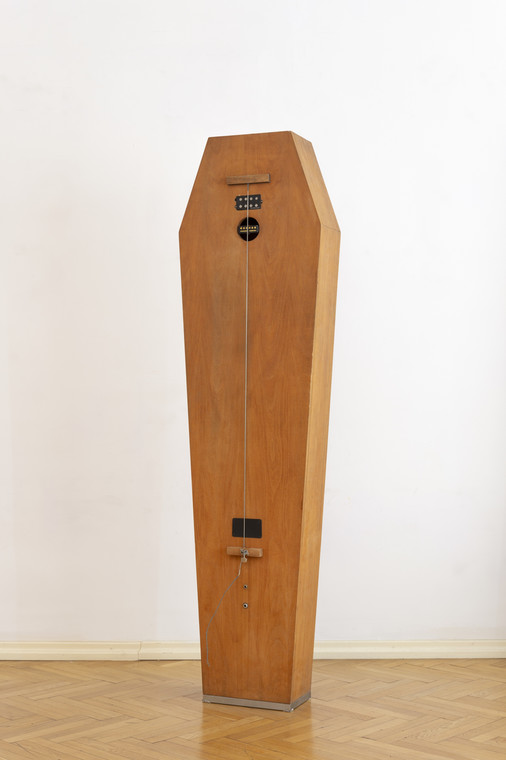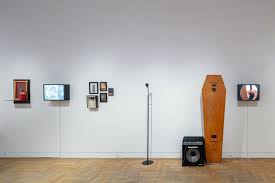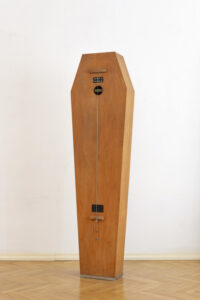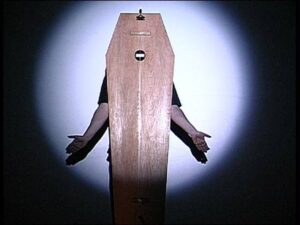
A visual artist and an outstanding educator. He was born on May 8, 1960 in Poznań. He created installations, objects, photographs, drawings, video works and audioperformance. From the 90s. his work was situated on the border of visual arts and music. He died on September 6, 2014. Knaflewski was known as KNAF, he is the founder of one of the most interesting artistic groups of the 1980s, Koło Klipsa. He played in punk bands Rasa, Stefan and Socjalizm. He ran the first new wave club Dno in Poznań. He died in 2014.
Leszek Knaflewski has been working with the coffin since 1999. The first show took place at the AT Gallery at the Academy of Fine Arts in Poznań.
At the beginning of the work, there were scores with notes made of spicy forms known from earlier works. The initial actions were more economical in means of expression, later they began to evolve, gaining new, richer forms of sound. In later audio performances, Knaflewski developed the musical layer. Each time they were unique events due to the large role of improvised parties. The artist played a bell, a single string and a coffin resonance box using a sound processing device and generating sounds with a system of amplifiers.
The coffin motif also appeared in Knaflewski’s The Ballet of Passive Resistance (2000) – an installation made of three transparent plexiglass coffins filled with roots. Above the coffins hung on the wall a shower tap with a hose topped with a metal spike.



Of course, Knaflewski’s performances are an extremely accurate illustration of the necrophilic urge present in contemporary Polish culture. We live in coffins, carry out exhumations, worship sacred remains, carry heroic corpses … the cemetery is the keystone of our national consciousness.
A very interesting artist from Hong Kong comes to mind, Samson Young, with his politically charged performances and installations. He represented Hong Kong at the 2017 Venice Biennale. During his first performance in New York in 2015, he created the sound for a six-hour film of US bombing in the Middle East, then recreated the sounds of carnage on a specially crafted configuration of instruments and non-instruments, such as a compressed air can or razor.